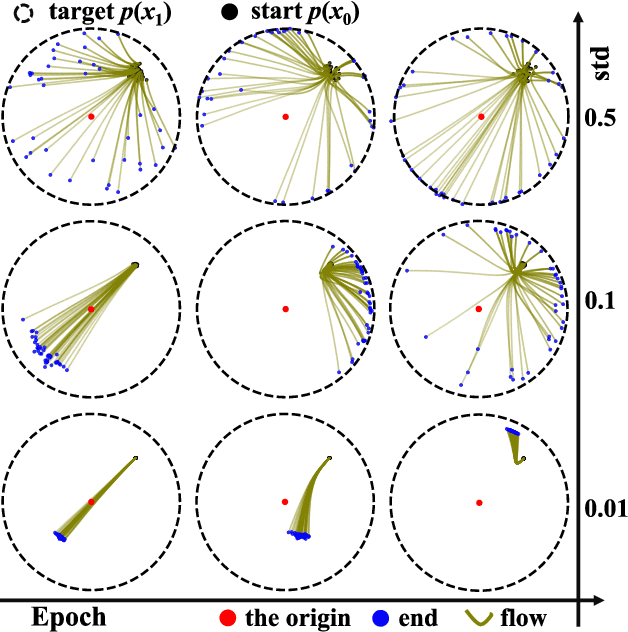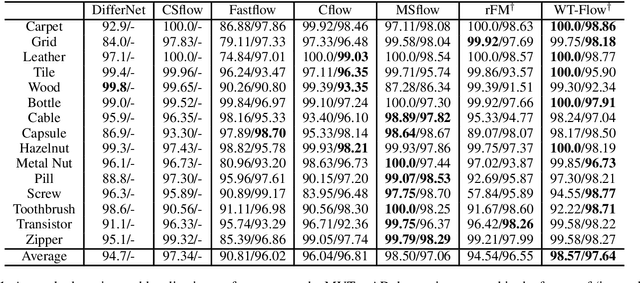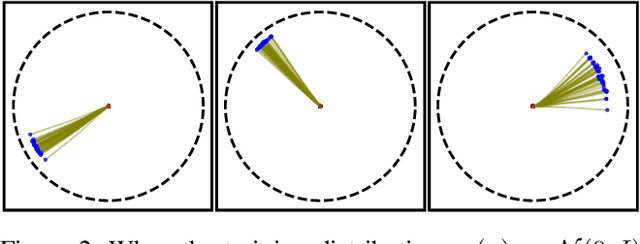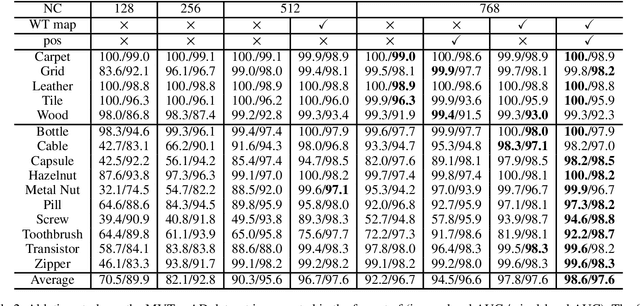Lin Liu
University of South Australia
Source-Free Cross-Domain Continual Learning
Oct 02, 2025Abstract:Although existing cross-domain continual learning approaches successfully address many streaming tasks having domain shifts, they call for a fully labeled source domain hindering their feasibility in the privacy constrained environments. This paper goes one step ahead with the problem of source-free cross-domain continual learning where the use of source-domain samples are completely prohibited. We propose the idea of rehearsal-free frequency-aware dynamic prompt collaborations (REFEREE) to cope with the absence of labeled source-domain samples in realm of cross-domain continual learning. REFEREE is built upon a synergy between a source-pre-trained model and a large-scale vision-language model, thus overcoming the problem of sub-optimal generalizations when relying only on a source pre-trained model. The domain shift problem between the source domain and the target domain is handled by a frequency-aware prompting technique encouraging low-frequency components while suppressing high-frequency components. This strategy generates frequency-aware augmented samples, robust against noisy pseudo labels. The noisy pseudo-label problem is further addressed with the uncertainty-aware weighting strategy where the mean and covariance matrix are weighted by prediction uncertainties, thus mitigating the adverse effects of the noisy pseudo label. Besides, the issue of catastrophic forgetting (CF) is overcome by kernel linear discriminant analysis (KLDA) where the backbone network is frozen while the classification is performed using the linear discriminant analysis approach guided by the random kernel method. Our rigorous numerical studies confirm the advantage of our approach where it beats prior arts having access to source domain samples with significant margins.
Black-Box Time-Series Domain Adaptation via Cross-Prompt Foundation Models
Oct 01, 2025Abstract:The black-box domain adaptation (BBDA) topic is developed to address the privacy and security issues where only an application programming interface (API) of the source model is available for domain adaptations. Although the BBDA topic has attracted growing research attentions, existing works mostly target the vision applications and are not directly applicable to the time-series applications possessing unique spatio-temporal characteristics. In addition, none of existing approaches have explored the strength of foundation model for black box time-series domain adaptation (BBTSDA). This paper proposes a concept of Cross-Prompt Foundation Model (CPFM) for the BBTSDA problems. CPFM is constructed under a dual branch network structure where each branch is equipped with a unique prompt to capture different characteristics of data distributions. In the domain adaptation phase, the reconstruction learning phase in the prompt and input levels is developed. All of which are built upon a time-series foundation model to overcome the spatio-temporal dynamic. Our rigorous experiments substantiate the advantage of CPFM achieving improved results with noticeable margins from its competitors in three time-series datasets of different application domains.
Linear Causal Representation Learning by Topological Ordering, Pruning, and Disentanglement
Sep 26, 2025Abstract:Causal representation learning (CRL) has garnered increasing interests from the causal inference and artificial intelligence community, due to its capability of disentangling potentially complex data-generating mechanism into causally interpretable latent features, by leveraging the heterogeneity of modern datasets. In this paper, we further contribute to the CRL literature, by focusing on the stylized linear structural causal model over the latent features and assuming a linear mixing function that maps latent features to the observed data or measurements. Existing linear CRL methods often rely on stringent assumptions, such as accessibility to single-node interventional data or restrictive distributional constraints on latent features and exogenous measurement noise. However, these prerequisites can be challenging to satisfy in certain scenarios. In this work, we propose a novel linear CRL algorithm that, unlike most existing linear CRL methods, operates under weaker assumptions about environment heterogeneity and data-generating distributions while still recovering latent causal features up to an equivalence class. We further validate our new algorithm via synthetic experiments and an interpretability analysis of large language models (LLMs), demonstrating both its superiority over competing methods in finite samples and its potential in integrating causality into AI.
MultiEdit: Advancing Instruction-based Image Editing on Diverse and Challenging Tasks
Sep 18, 2025Abstract:Current instruction-based image editing (IBIE) methods struggle with challenging editing tasks, as both editing types and sample counts of existing datasets are limited. Moreover, traditional dataset construction often contains noisy image-caption pairs, which may introduce biases and limit model capabilities in complex editing scenarios. To address these limitations, we introduce MultiEdit, a comprehensive dataset featuring over 107K high-quality image editing samples. It encompasses 6 challenging editing tasks through a diverse collection of 18 non-style-transfer editing types and 38 style transfer operations, covering a spectrum from sophisticated style transfer to complex semantic operations like person reference editing and in-image text editing. We employ a novel dataset construction pipeline that utilizes two multi-modal large language models (MLLMs) to generate visual-adaptive editing instructions and produce high-fidelity edited images, respectively. Extensive experiments demonstrate that fine-tuning foundational open-source models with our MultiEdit-Train set substantially improves models' performance on sophisticated editing tasks in our proposed MultiEdit-Test benchmark, while effectively preserving their capabilities on the standard editing benchmark. We believe MultiEdit provides a valuable resource for advancing research into more diverse and challenging IBIE capabilities. Our dataset is available at https://huggingface.co/datasets/inclusionAI/MultiEdit.
ENSI: Efficient Non-Interactive Secure Inference for Large Language Models
Sep 11, 2025Abstract:Secure inference enables privacy-preserving machine learning by leveraging cryptographic protocols that support computations on sensitive user data without exposing it. However, integrating cryptographic protocols with large language models (LLMs) presents significant challenges, as the inherent complexity of these protocols, together with LLMs' massive parameter scale and sophisticated architectures, severely limits practical usability. In this work, we propose ENSI, a novel non-interactive secure inference framework for LLMs, based on the principle of co-designing the cryptographic protocols and LLM architecture. ENSI employs an optimized encoding strategy that seamlessly integrates CKKS scheme with a lightweight LLM variant, BitNet, significantly reducing the computational complexity of encrypted matrix multiplications. In response to the prohibitive computational demands of softmax under homomorphic encryption (HE), we pioneer the integration of the sigmoid attention mechanism with HE as a seamless, retraining-free alternative. Furthermore, by embedding the Bootstrapping operation within the RMSNorm process, we efficiently refresh ciphertexts while markedly decreasing the frequency of costly bootstrapping invocations. Experimental evaluations demonstrate that ENSI achieves approximately an 8x acceleration in matrix multiplications and a 2.6x speedup in softmax inference on CPU compared to state-of-the-art method, with the proportion of bootstrapping is reduced to just 1%.
See What You Need: Query-Aware Visual Intelligence through Reasoning-Perception Loops
Aug 25, 2025Abstract:Human video comprehension demonstrates dynamic coordination between reasoning and visual attention, adaptively focusing on query-relevant details. However, current long-form video question answering systems employ rigid pipelines that decouple reasoning from perception, leading to either information loss through premature visual abstraction or computational inefficiency through exhaustive processing. The core limitation lies in the inability to adapt visual extraction to specific reasoning requirements, different queries demand fundamentally different visual evidence from the same video content. In this work, we present CAVIA, a training-free framework that revolutionizes video understanding through reasoning, perception coordination. Unlike conventional approaches where visual processing operates independently of reasoning, CAVIA creates a closed-loop system where reasoning continuously guides visual extraction based on identified information gaps. CAVIA introduces three innovations: (1) hierarchical reasoning, guided localization to precise frames; (2) cross-modal semantic bridging for targeted extraction; (3) confidence-driven iterative synthesis. CAVIA achieves state-of-the-art performance on challenging benchmarks: EgoSchema (65.7%, +5.3%), NExT-QA (76.1%, +2.6%), and IntentQA (73.8%, +6.9%), demonstrating that dynamic reasoning-perception coordination provides a scalable paradigm for video understanding.
On computing and the complexity of computing higher-order $U$-statistics, exactly
Aug 18, 2025Abstract:Higher-order $U$-statistics abound in fields such as statistics, machine learning, and computer science, but are known to be highly time-consuming to compute in practice. Despite their widespread appearance, a comprehensive study of their computational complexity is surprisingly lacking. This paper aims to fill that gap by presenting several results related to the computational aspect of $U$-statistics. First, we derive a useful decomposition from an $m$-th order $U$-statistic to a linear combination of $V$-statistics with orders not exceeding $m$, which are generally more feasible to compute. Second, we explore the connection between exactly computing $V$-statistics and Einstein summation, a tool often used in computational mathematics, quantum computing, and quantum information sciences for accelerating tensor computations. Third, we provide an optimistic estimate of the time complexity for exactly computing $U$-statistics, based on the treewidth of a particular graph associated with the $U$-statistic kernel. The above ingredients lead to a new, much more runtime-efficient algorithm of exactly computing general higher-order $U$-statistics. We also wrap our new algorithm into an open-source Python package called $\texttt{u-stats}$. We demonstrate via three statistical applications that $\texttt{u-stats}$ achieves impressive runtime performance compared to existing benchmarks. This paper aspires to achieve two goals: (1) to capture the interest of researchers in both statistics and other related areas further to advance the algorithmic development of $U$-statistics, and (2) to offer the package $\texttt{u-stats}$ as a valuable tool for practitioners, making the implementation of methods based on higher-order $U$-statistics a more delightful experience.
Grove MoE: Towards Efficient and Superior MoE LLMs with Adjugate Experts
Aug 11, 2025Abstract:The Mixture of Experts (MoE) architecture is a cornerstone of modern state-of-the-art (SOTA) large language models (LLMs). MoE models facilitate scalability by enabling sparse parameter activation. However, traditional MoE architecture uses homogeneous experts of a uniform size, activating a fixed number of parameters irrespective of input complexity and thus limiting computational efficiency. To overcome this limitation, we introduce Grove MoE, a novel architecture incorporating experts of varying sizes, inspired by the heterogeneous big.LITTLE CPU architecture. This architecture features novel adjugate experts with a dynamic activation mechanism, enabling model capacity expansion while maintaining manageable computational overhead. Building on this architecture, we present GroveMoE-Base and GroveMoE-Inst, 33B-parameter LLMs developed by applying an upcycling strategy to the Qwen3-30B-A3B-Base model during mid-training and post-training. GroveMoE models dynamically activate 3.14-3.28B parameters based on token complexity and achieve performance comparable to SOTA open-source models of similar or even larger size.
SPEX: A Vision-Language Model for Land Cover Extraction on Spectral Remote Sensing Images
Aug 07, 2025Abstract:Spectral information has long been recognized as a critical cue in remote sensing observations. Although numerous vision-language models have been developed for pixel-level interpretation, spectral information remains underutilized, resulting in suboptimal performance, particularly in multispectral scenarios. To address this limitation, we construct a vision-language instruction-following dataset named SPIE, which encodes spectral priors of land-cover objects into textual attributes recognizable by large language models (LLMs), based on classical spectral index computations. Leveraging this dataset, we propose SPEX, a multimodal LLM designed for instruction-driven land cover extraction. To this end, we introduce several carefully designed components and training strategies, including multiscale feature aggregation, token context condensation, and multispectral visual pre-training, to achieve precise and flexible pixel-level interpretation. To the best of our knowledge, SPEX is the first multimodal vision-language model dedicated to land cover extraction in spectral remote sensing imagery. Extensive experiments on five public multispectral datasets demonstrate that SPEX consistently outperforms existing state-of-the-art methods in extracting typical land cover categories such as vegetation, buildings, and water bodies. Moreover, SPEX is capable of generating textual explanations for its predictions, thereby enhancing interpretability and user-friendliness. Code will be released at: https://github.com/MiliLab/SPEX.
How and Why: Taming Flow Matching for Unsupervised Anomaly Detection and Localization
Aug 07, 2025



Abstract:We propose a new paradigm for unsupervised anomaly detection and localization using Flow Matching (FM), which fundamentally addresses the model expressivity limitations of conventional flow-based methods. To this end, we formalize the concept of time-reversed Flow Matching (rFM) as a vector field regression along a predefined probability path to transform unknown data distributions into standard Gaussian. We bring two core observations that reshape our understanding of FM. First, we rigorously prove that FM with linear interpolation probability paths is inherently non-invertible. Second, our analysis reveals that employing reversed Gaussian probability paths in high-dimensional spaces can lead to trivial vector fields. This issue arises due to the manifold-related constraints. Building on the second observation, we propose Worst Transport (WT) displacement interpolation to reconstruct a non-probabilistic evolution path. The proposed WT-Flow enhances dynamical control over sample trajectories, constructing ''degenerate potential wells'' for anomaly-free samples while allowing anomalous samples to escape. This novel unsupervised paradigm offers a theoretically grounded separation mechanism for anomalous samples. Notably, FM provides a computationally tractable framework that scales to complex data. We present the first successful application of FM for the unsupervised anomaly detection task, achieving state-of-the-art performance at a single scale on the MVTec dataset. The reproducible code for training will be released upon camera-ready submission.
 Add to Chrome
Add to Chrome Add to Firefox
Add to Firefox Add to Edge
Add to Edge